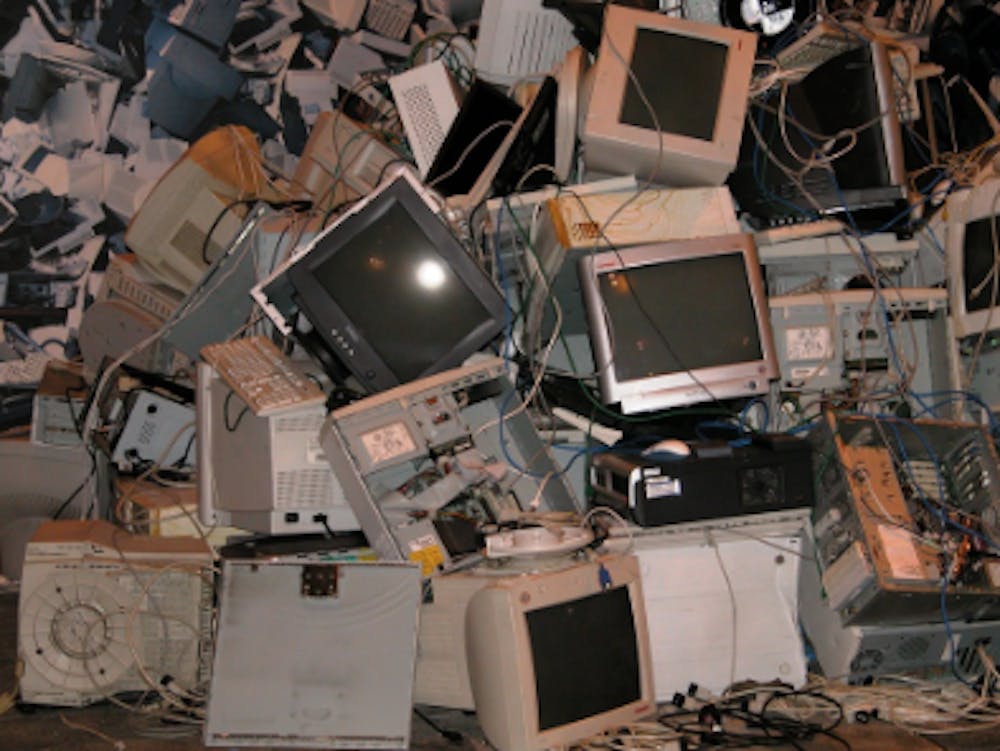By: Sofia Liszka
Last month, Apple unveiled its latest lineup of iPhones to a worldwide consumer audience. The iPhones XS and XS Max are already available for purchase, and the less expensive iPhone XR is open for preorders beginning next Friday, Oct. 19. Sales on this year’s models are already higher than years past and are not projected to subside just yet. As Apple sparks the annual desire for a phone upgrade once again, many existing phones are set to meet their trade-in fate. What happens to these phones? It’s no secret that the trade-in phone comes in many different conditions. Phones of more recent models and phones in the best shape are often resold, and as wear and tear increases, phones become increasingly recycled and repurposed. This has not always been the case, however. Looking at electronic waste, or e-waste, more broadly reveals dicier policies of disposal. In 2013, The New York Times notably covered the path of disassembly for many phones and related e-waste, a path that entails e-waste shipment from the United States overseas. Countries that take the waste in, many of which are severely poverty-stricken, burn heaps of e-waste from around the world for both common and precious metals contained in electronic devices. This process still goes on today, a continuing detrimental health and environmental impact. Since the article’s publication in 2013, established federal programs are seeing the effects of their efforts to combat e-waste. The United States Environmental Protection Agency (EPA) created the Sustainable Materials Management Electronics Challenge, an attempt to partner with the nation’s industries to reroute e-waste. For a voluntary program, the EPA found success, reporting that “Since the program’s inception in 2013, participants have sent more than 710,000 tons of used electronics to certified recyclers, resulting in the avoidance of more than 1.8 million tons of CO2 emissions. This represents more than 18 percent of all used electronics collected in the U.S. over the same time period.” While this program was dependent on willingness of industry participation, one is left to wonder: what happened to the other 82 percent of collected electronics?Looking at e-waste further from a business perspective, the need for management has spurred the growth of outside innovators handling generated e-waste. One of the most successful to this date is Green Citizen, a northern California company that offers e-waste recycling for businesses and individuals alike. Green Citizen has 54 corporate clients listed on their site, among them Google, NASA and the EPA. A center like that of Green Citizen is important to the region’s e-waste stream, especially when located on the edge of Silicon Valley. Yet, Green Citizenreports that “Since January 2015, the cost of recycling has gone up by 800 percent,” resulting in the closure of many of its recycling centers. Third-party recycling companies like Green Citizen share this unjust burden for the beneficial work they do.Adding to this problem is the lack of uniformity in e-waste policy across states. Only half of the 50 states have established legislation in this field, as shown by a map from the National Center for Electronics Recycling. Unsurprisingly, California, the nation’s environmental vanguard, took the lead on enacting this area of policy, with other states following since 2003. Here in Ohio, no legislation has been established for regulating e-waste.The 25 states with some form of e-waste policy report data generated through their waste collections for groups like the Electronics Recycling Coordination Clearinghouse (ERCC). The ERCC identifies itself as a forum managed by non-profits. Its members, states with e-waste policy and related stakeholders, use the ERCC for help analyzing their existing e-waste policies and trace trends to strengthen their overall front towards combating e-waste. Therefore, states without e-waste regulation exempt themselves from this process. Though the states involved are successful, the path towards proper e-waste management could only be strengthened by the addition of the other 25 states. As one of many companies producing devices that can easily become e-waste, Apple has taken several steps towards managing its products and their potential environmental impact. The company offers a trade-in opportunity through its Apple GiveBack program, where any of the company’s products can be taken in in exchange for a gift card reflective of the product’s value. Apple recycles the devices it receives if they do not meet the criteria for resale. Specific to a phone, if recycling is its fate, Apple’s latest robot disassembles the phone. This way, materials can be recovered and reused by Apple in ways that mainstream recyclers are unable to execute with their broader methods of recovery. Especially following a new iPhone launch, most consumers solely see Apple as the place where our phones are coming from. Why not think about Apple as the place where our phones can go?Photo via Pixabay.

